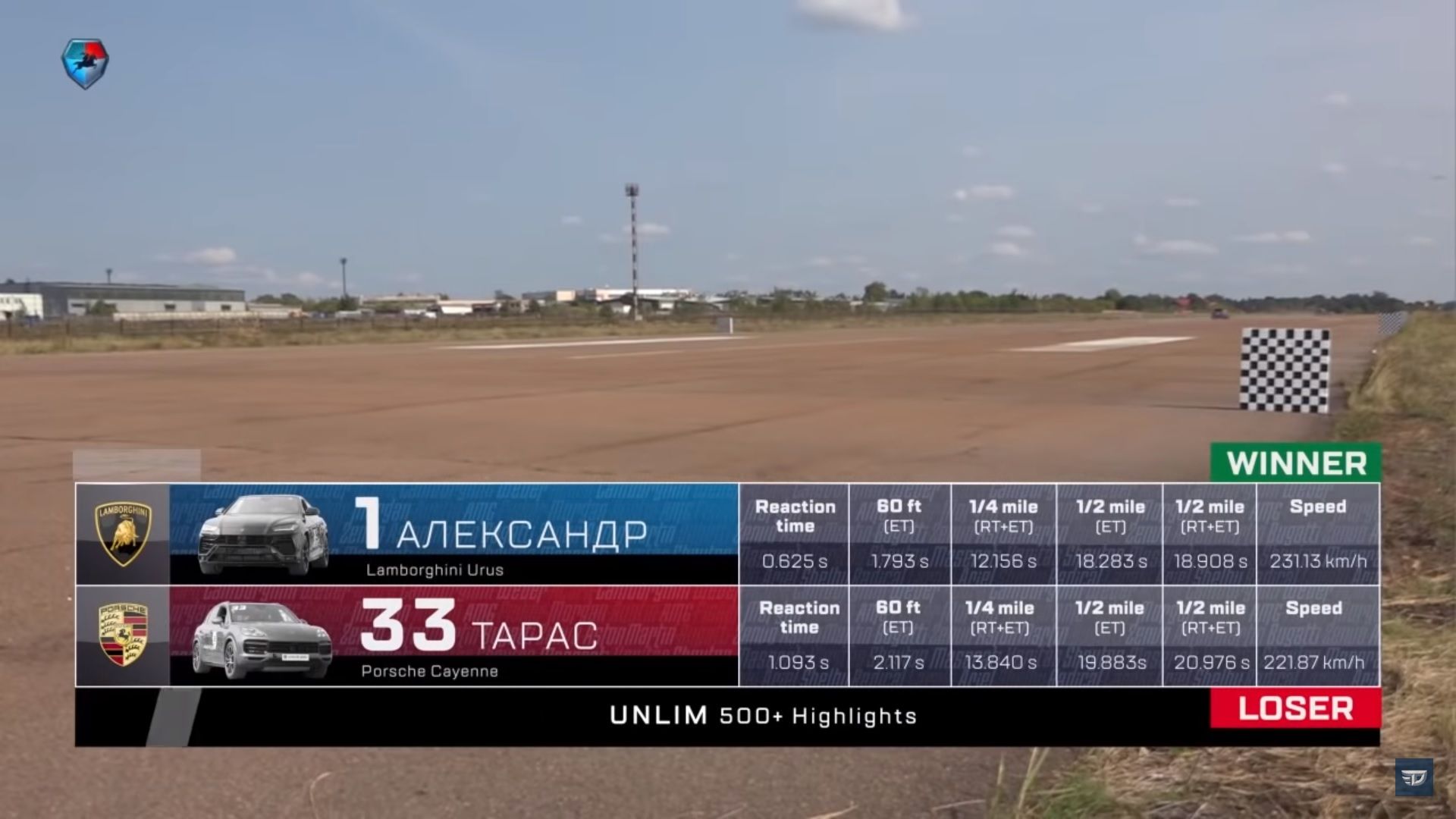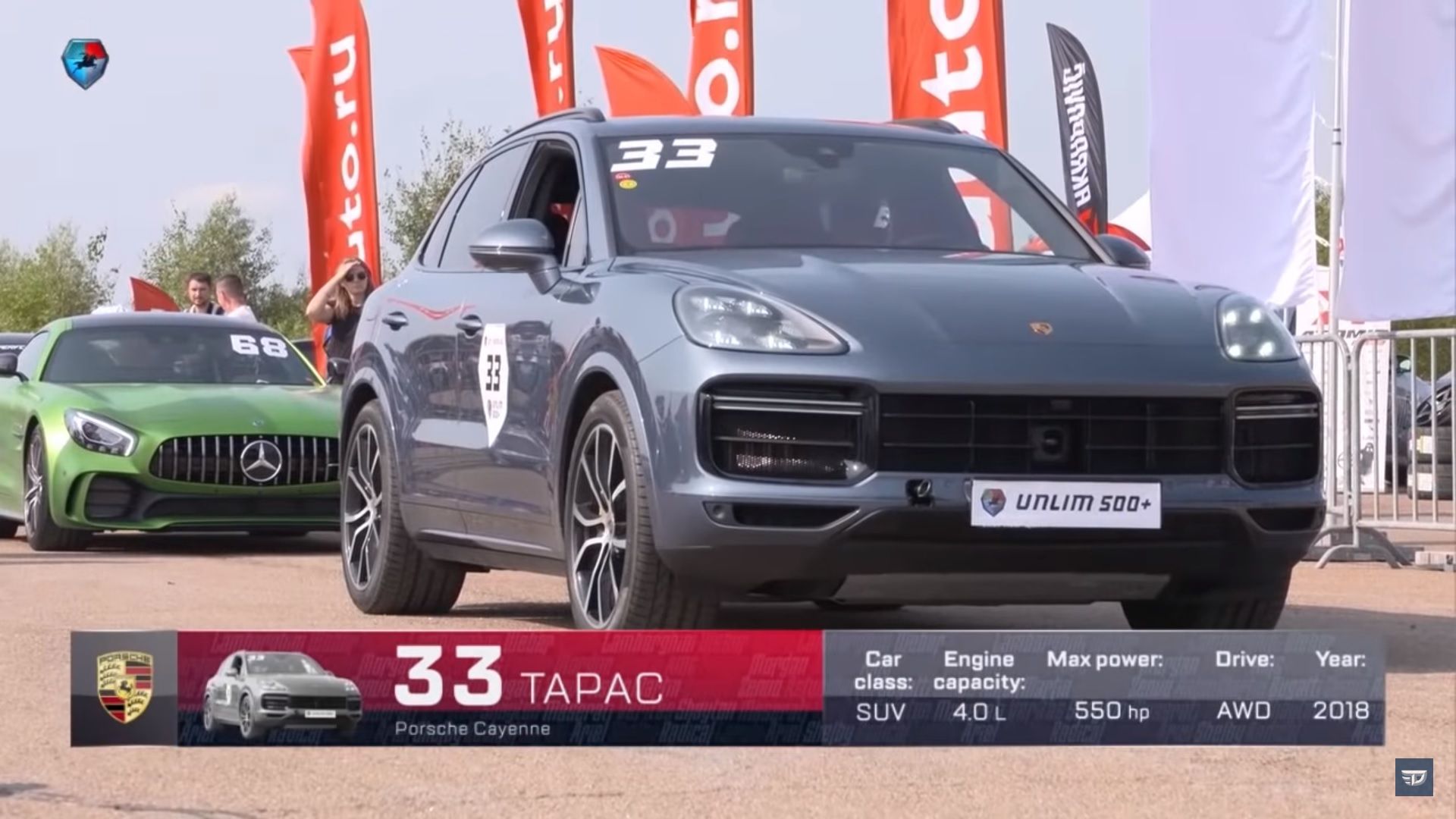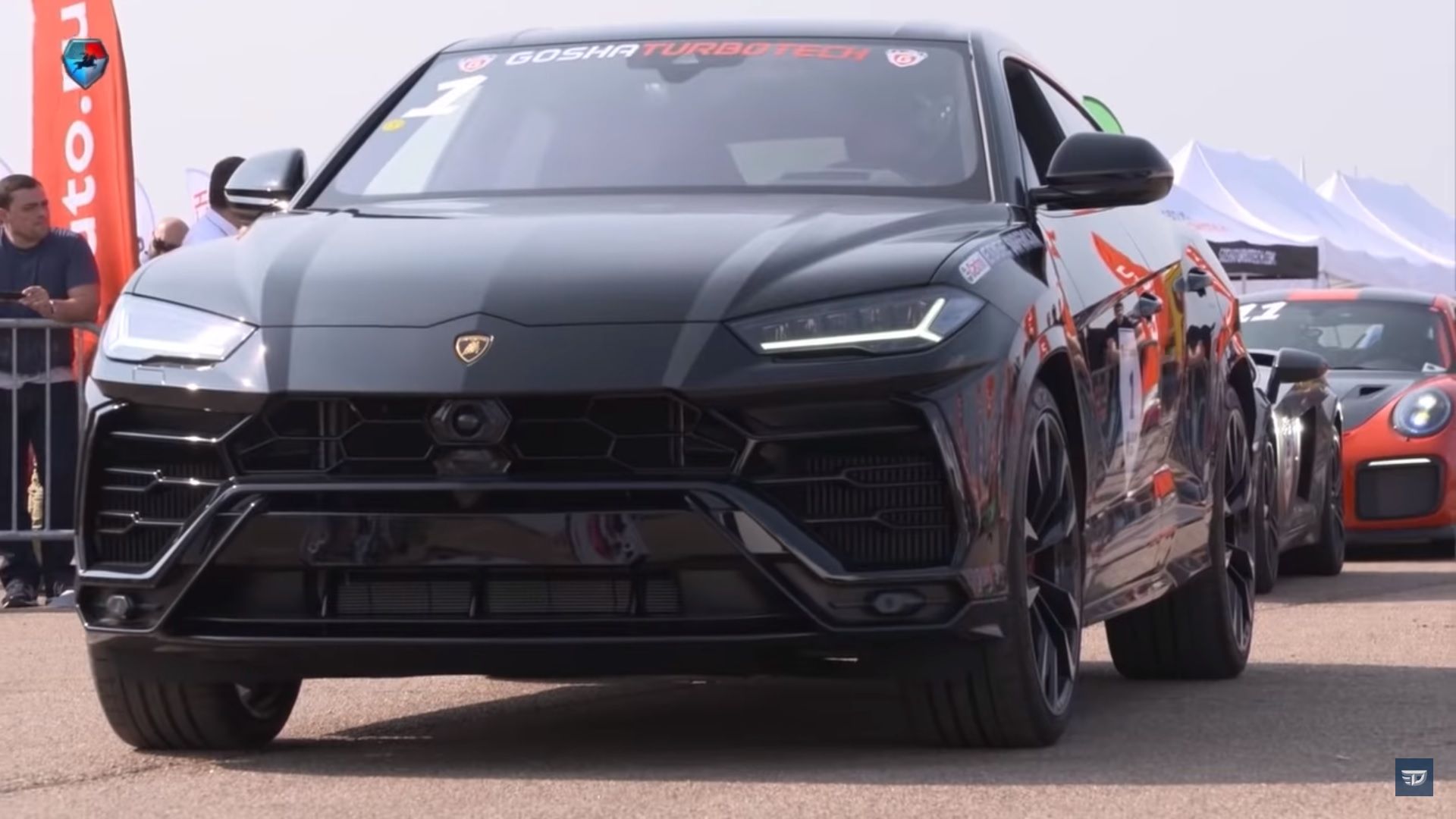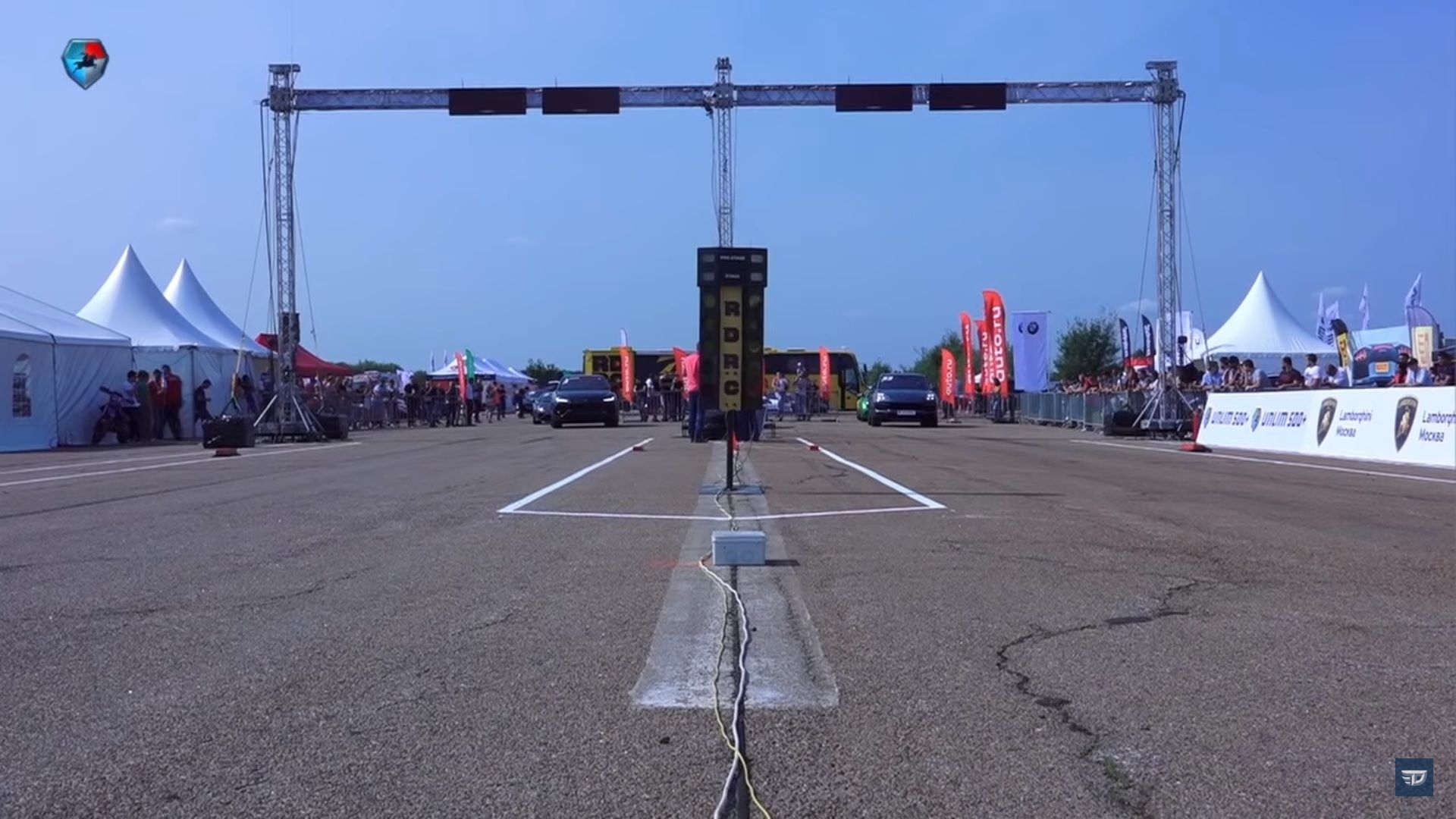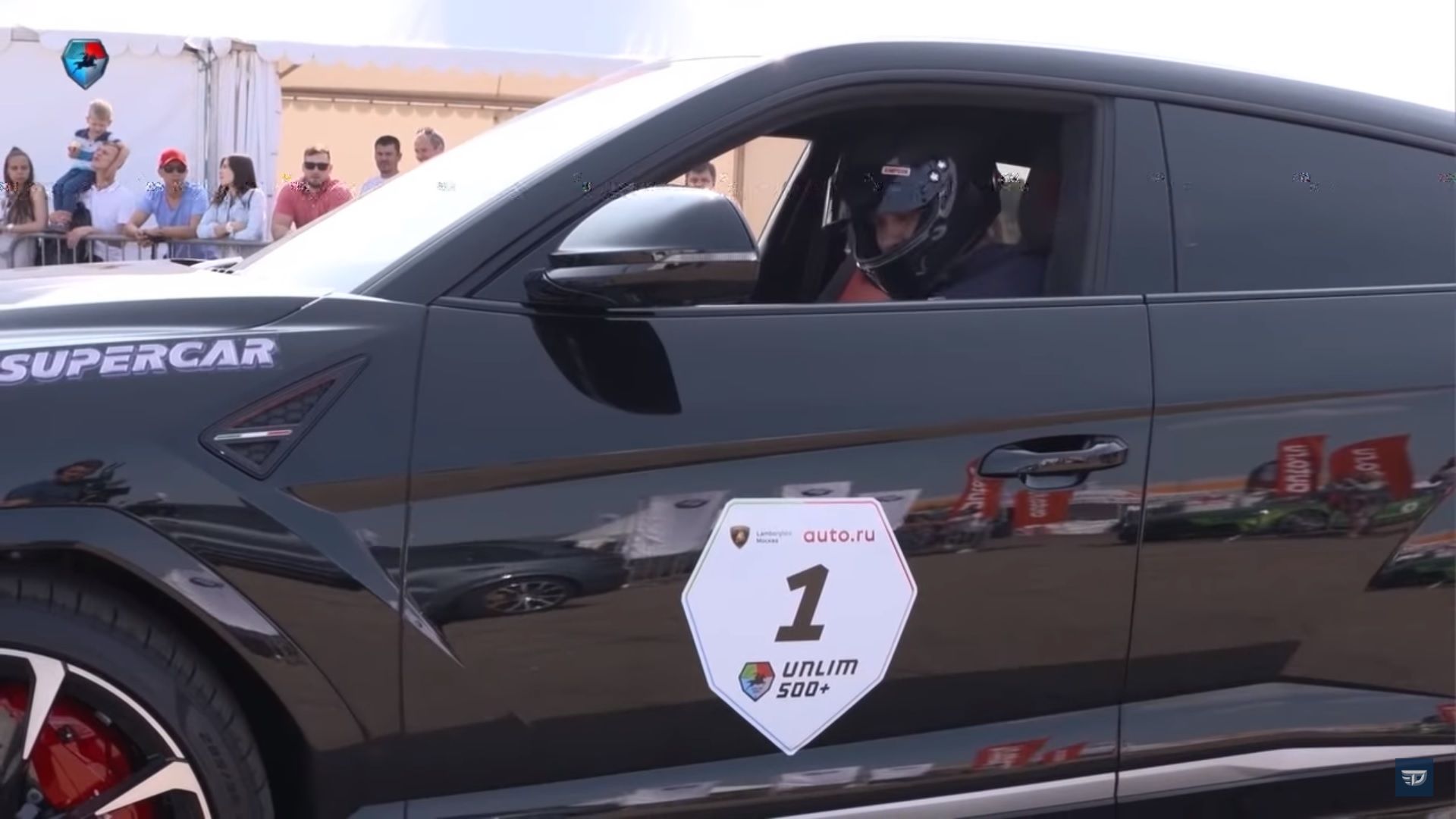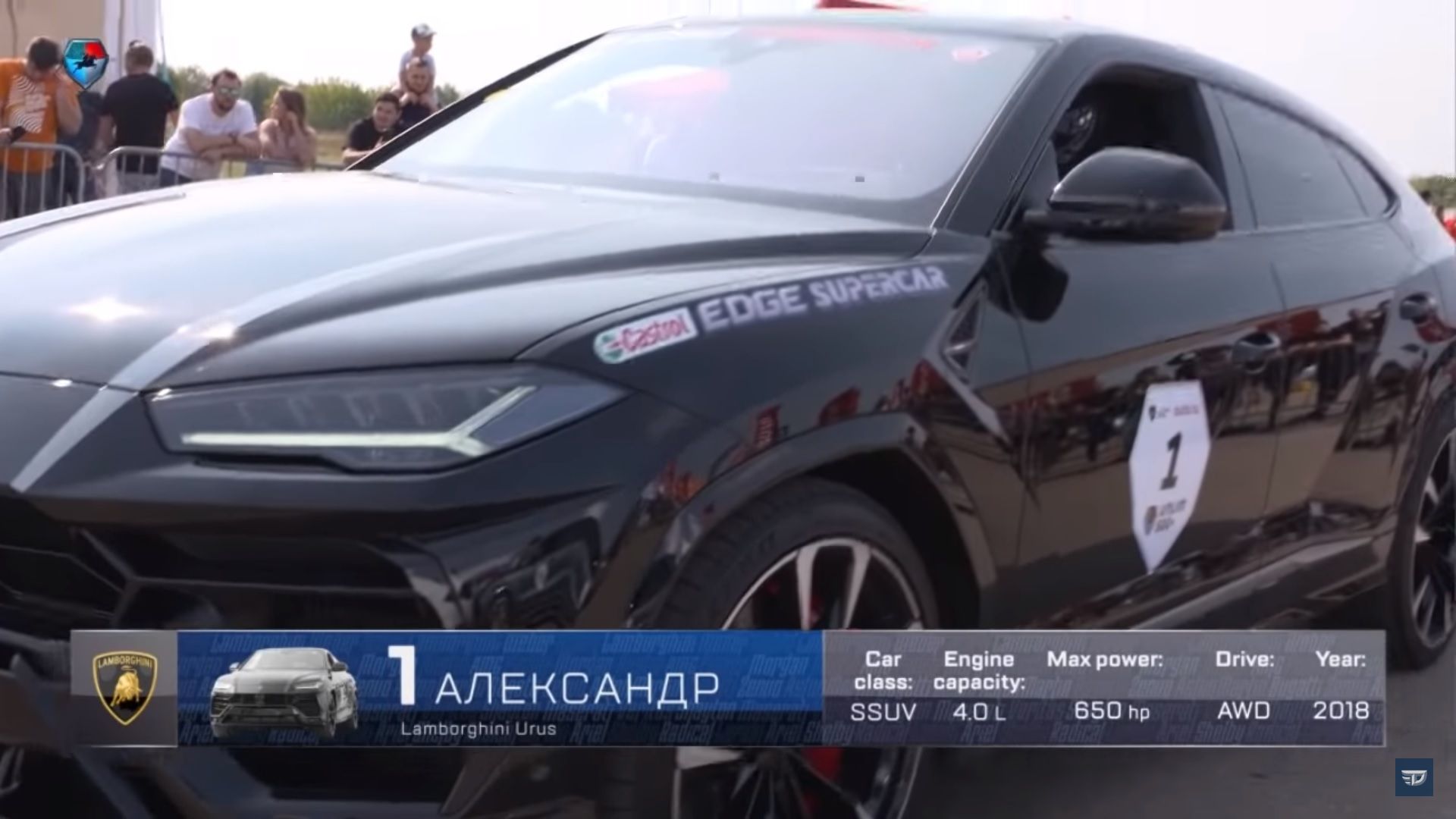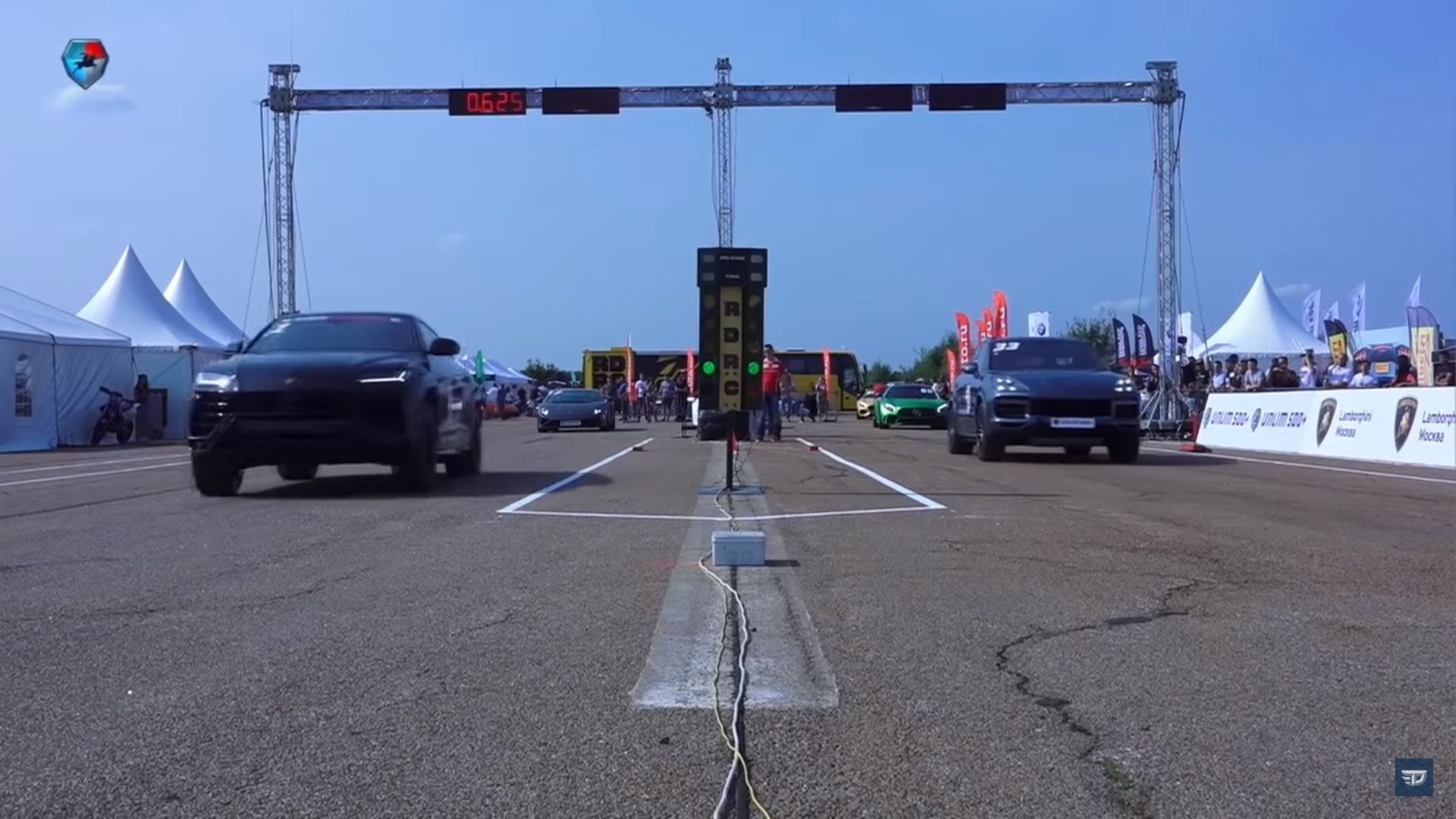As you might've noticed, we haven't quite been knocked over by the 2020 Porsche Cayenne Coupe, but we're still curious how it will perform on a drag strip. Before we get our answers, we have this video for you to serve as the benchmark. It comes from Russia, and in it, a Porsche Cayenne Turbo takes on the car that gave birth to the Super SUV segment: the Lamborghini Urus. What brand from the VAG Group will end up with its ego bruised after this half-mile tussle?
The Result is Predictable Although it's Still Cool to See it All Unfold
Drag Racing is a straight-forward way to compare two (or more) cars in terms of acceleration. Of course, you've got to take into account the surface, the tires, the specific features of each car involved (some may not have clever launch control systems, for instance), and, ultimately, the living being behind the wheel whose reaction times may vary.
This is exactly why it's not pointless to pit the Cayenne Turbo against the daddy of fast SUVs, the Urus. The Cayenne Turbo is, at the moment, the baddest Cayenne money can buy and by that, I mean that it's the most powerful and the fastest of the lot - until the S drops, that is.
It features the same twin-turbocharged, 4.0-liter V-8 as the 2017 Cayenne Turbo albeit with some tweaks. For instance, max power is now 542 horsepower between 5,750-6,000 rpm, up by 30 horsepower and, as such, only 20 horsepower below the benchmark set by the last Cayenne Turbo S. Torque is also up to 568 pound-feet, 14 pound-feet more than before and 23 off the Cayenne Turbo S' figure.
The catch is that the third-generation Cayenne Turbo is actually quicker than the second-generation Turbo S and, in part, that's because it's lighter tipping the scales at 4,797 pounds against the 4,927 pounds of the Turbo S. Put the $1,130 Chrono Sport Package on your $125,650 Cayenne turbo and it will accelerate from 0 to 60 mph in just 3.7 seconds, 0.2 seconds quicker than it would without the package. The Turbo S could go from naught to 60 mph in 3.8 seconds en route to a top speed of 176 mph. The 2019 Cayenne Turbo can reach 177 mph either way.
The Lamborghini Urus shares some bits with the Cayenne, most importantly VAG's MLB Evo platform but Lamborghini's first SUV in three decades is even faster. Under the creased hood in front of the cabin is a 4.0-liter, twin-turbocharged V-8 engine that is, to some extent, related to the Cayenne's engine but it offers a whole lot more push.
The official figures are as follows: 650 horsepower at 6,000 rpm and 627 pound-feet of torque from 2,250 rpm. Arithmetics are telling us that the Cayenne is trailing Lamborghini's high-riding model by almost 110 ponies and almost 60 pound-feet. That's crazy when you consider you can now go to a Chevy dealership and buy a brand-new Chevrolet Spark LS with a manual and its puny, little 1.4-liter engine is only good enough for 98 horsepower. Then there's the base model Fiat 500 with a 109 horsepower 1.4-liter mill, exactly as much as the Cayenne lacks in comparison to the Urus!
Off the line, the Lamborghini emerges as the clear favorite, but that's also because its driver was the one who got going first with a reaction time of 0.62 seconds compared to the man in the Cayenne who only got going after 1.09 seconds had elapsed already. From then on, the Urus keeps on going at a blistering pace covering 60 feet in 1.79 seconds (2.11 seconds for the Porsche) and the quarter-mile in 12.15 seconds. The Cayenne is already 1.7 seconds down at the half-way point, and it doesn't get better from here on out. Lamborghini's pride is avenged, and the Urus wins with a time of 18.90 seconds at a speed of 143.6 mph. The Porsche takes quite a blow finishing second, over two seconds after the Lamborghini at a speed of 137.4 mph.
So, how could this be? Well, you could argue that it was a foregone conclusion. After all, in spite of the weight disadvantage (the Urus is about 100 pounds heavier than the Cayenne Turbo), the Urus is a lot more powerful and has more torque which translates to a quicker 0-60 time. But the difference isn't as big, according to the manufacturers. Or is it? You see, manufacturers sometimes overestimate a car's performance and, some other times, they underestimate it for whatever reason. In the case of the Urus, it's the latter situation that applies. We wrote back in November 2018, how someone in a stock Urus accelerated from naught to 60 mph in 2.93 seconds. Again, with no modifications done to the SSUV whatsoever, just the launch control and the Corsa mode enabled.
With this in mind, you can understand how the Lambo was over a second quicker across the quarter-mile.
How Do the Other Really Quick SUVs Stack Up?
The SUV isn't a new thing. Jeep first used the term back in the mid-'70s when describing the Jeep Cherokee SJ. You can even find older vehicles that somewhat adhere to the definition of the SUV (with minimal amounts of sportiness) such as the 1955 Gaz M-72 'Pobeda,' the first series-produced monocoque four-wheel drive vehicle. But, in my view, the first genuine SUV is the newer XJ-series Cherokee developed by AMC and launched in 1984. That's because the XJ Cherokee was the first Jeep to feature unibody construction and it was also compact enough to make sense in the inner cities, whereas the SJ was a full-size truck that was an inefficient alternative to a station wagon.
One of the first crossovers (all-wheel-drive vehicles with body-and-frame chassis) that were true to the 'S' in SUV was the GMC Typhoon. In production for only two and a bit years, the Typhoon is a bit of a rare bird today as only 4,697 units were ever made. It cost $29,470 when new which is about $54,693 in today's money. This wasn't too much at a time when a BMW (E30) M3 cost $35,900, and it was slower to 60 mph.
The Typhoon was powered by the same 4.3-liter, turbocharged, LB4 V-6 as the Syclone Pick-Up and, with 14 psi of boost, it put out 280 horsepower at 4,400 rpm and 360 pound-feet of torque at 3,600 rpm. By comparison a $95,850 Ferrari 348 put out 306 horsepower from its 3.4-liter V-8, was 515 pounds lighter, and it needed six seconds flat to reach 60 mph. The Typhoon? Just 5.3 seconds as tested by Car & Driver, a whole 1.3 seconds quicker than the U.S.-spec M3 and just 1.4 seconds slower than the fresh Cayenne Coupe Turbo. The Typhoon was, then, the pole-bearer for a whole generation of sporty utility vehicles but, in spite of its lack of popularity (and the fact that quite a few perished during the Cash for Clunkers years), the segment is now booming.
All luxury manufacturers offer today a fast SUV. Mercedes glues the AMG badge to any and all of its crossovers, big and small, including the imposing G-Wagon. BMW, likewise, will introduce a new X5 M soon that's tipped to boast 'at least 600 horsepower'. The VAG Group itself has a third hot SUV in its pocket in the 2020 Bentley Bentayga Speed that's one mph faster than the Urus (on paper), and that cranks out 626 horsepower and 664 pound-feet of torque from a 6.0-liter W-12 mill. With almost 30 fewer horsepower than the Urus, though, the Bentayga speed is some 0.3 seconds slower to 60 mph (officially), but this doesn't mean it's less of an amazing vehicle.
Then there's the Jeep Cherokee Trackhawk with its 6.2-liter supercharged Hemi V-8 engine that pumps out 707 horsepower and 645 pound-feet of torque. Jeep says the Trakchawk can sprint from naught to 60 mph in 3.5 seconds although it's about 600 pounds heavier than the Urus. I guess that the extra oomph wouldn't help it in a head-to-head drag race, but nobody's attempted one yet so we'll have to wait and see. Also, you can't talk ludicrous SUVs without mentioning the only one that actually has the 'Ludicrous Model': Tesla's Model X P100D.
We wrote about the P100D testing its might against Ferrari's most powerful front-engined car, the 812 Superfast, back in October 2018 and the result was impressive. The P100D in the video sports the top-of-the-line drivetrain with 588 horsepower and 920 pound-feet of torque. In spite of its 5,700-pound weight and the fact that it lacked 200 horsepower that the Ferrari didn't, the Tesla got away first and that's because, as you can see here, the Model X P100D can go from naught to 60 mph in three seconds flat which is right in the ballpark of the Urus.
Of course, there are other contenders for the title of 'fastest SUV out there' like the Stelvio Quadrifoglio that not only is the fastest production SUV around the Nordschleife but it's also capable of going 0 to 60 in 3.4 seconds. More contenders are on the way, too, in the form of Aston Martin's DBX and others. Expect more electric SUVs to pop up with very competitive 0-to-60 times in the near future.
|
|
Lamborghini Urus |
Porsche Cayenne Turbo |
|
Engine type |
twin-turbo 4.0-liter V-8 |
Twin-turbocharged V-8 |
|
Drivetrain configuration |
front-engine, 4WD |
front engine |
|
Transmission |
8-speed automatic gearbox, characteristic depending on drive mode |
8-speed Tiptronic S |
|
Horsepower |
650 HP @ 6,000 RPM |
541 HP @ 5,750 - 6,000 RPM |
|
Torque |
627 LB-FT @ 2,250 RPM |
568 LB-FT @ 1,960 - 4,500 RPM |
|
0-to-100 km/h (62 mph) |
3.6 seconds |
4.1 seconds |
|
Top Speed |
190 mph |
177 mph |
Further reading
|
|
link=art177574> |
Read our full review on the 2019 Porsche Cayenne Turbo.
|
|
link=art163949> |
Read our full review on the 2020 Porsche Cayenne Coupe
|
|
link=art132643> |
Read our full review on the 2019 Lamborghini Urus.


